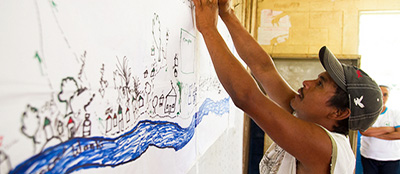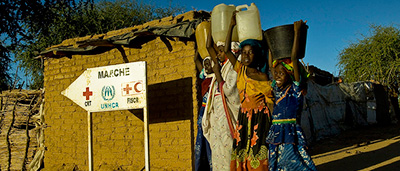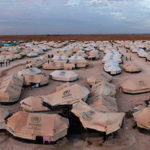Three groups of lessons emerge from the literature: Political lessons include: understanding Lebanon’s historic refugee experience; understanding how sectarian divisions affect policy and decision-making; the limitations of excluding key stakeholders; and understanding historic relations between refugees and host communities. Strategic lessons include developing a medium-term ...» more
Humanitarian Issues
International aid to Lebanon
Key findings: Solid data from the OECD and OCHA makes mapping the official aid to Lebanon possible. However, official data is only part of the story: major aid flows have remained unrecorded, for example from Saudi Arabia and Iran. Information on macro-level aid also seems largely gender-blind. Lebanon has received large volumes of international donor aid since the 1970s. ...» more
Stability and stabilisation approaches in multinational interventions
This rapid report is based on quantitative discourse analysis of stability and stabilisation approaches in all current UN, EU and NATO missions. The analysis included a total of 49 missions (covering peacekeeping, civilian and political missions) and 107 mandates/resolutions linked to these missions. Key findings:Out of a total of 49 missions examined for this report, 30 ...» more
Assessing seismic risk in Kenya
This report identifies literature that assesses seismic risk in Kenya. In this report seismic risk, as a concept, is understood to be the product of seismic hazard (the probability of harmful seismic phenomena) and seismic vulnerability (the degree of loss from seismic phenomena). In terms of overall seismic risk, the presence of part of the East African Rift (which runs ...» more
Border insecurity in North Africa
The literature on border security in North Africa has several key themes: security and terrorism; migration; and goods trafficking. These issues are all intertwined. Migration and trafficking tend to follow the same geographical routes, which or may not also include weapons smuggling for extremist groups. In addition, radicalists’ movements across borders frequently interact ...» more
Livelihoods in fragile contexts
There is strong literature on both livelihoods in general and livelihoods in fragile contexts, presenting conclusions and lessons from programmes and synthesising evidence from other contexts. This review draws mainly on lessons learned in the field, rather than rigorous evidence of impact. There are few impact studies conducted on programmes in fragile environments, as ...» more
The impact of integrated missions on humanitarian operations
Key findings Evidence remains scarce, problematic and contested. There is at least limited agreement on the following: Integration has had both negative and positive effects. Effects vary by individual actor, type of actor (UN agencies are more affected) and contexts (mission, country, point in time). Protection of civilians: Possible positive impacts: shared objectives ...» more
Child-friendly spaces for adolescent girls in emergency settings
The evidence base on this issue is small. Few programmes provide safe spaces exclusively for girls, although many child-friendly spaces run sessions by age and gender. Married girls and adolescent mothers are particularly under-served. Within emergency contexts, the provision of safe spaces tends to focus on psychosocial care and on developing social skills and social networks. ...» more
Electoral compliance units
The term ‘electoral compliance units’ is not widely understood by electoral scholars or practitioners in the field of electoral assistance. In the absence of a more concrete definition, this report understands ‘electoral compliance units’ to mean agencies or mechanisms that investigate and prosecute election-related fraud and breaches of law. Experts indicate that, rather than ...» more
Humanitarian Capability Definitions and Components
There is a dearth of literature on the concept of humanitarian capability. References often use capability and capacity interchangeably. Discussions of humanitarian performance show parallels with those on capability. There are almost no holistic, systematic or comparative reviews of the notion of humanitarian capability. References tend to focus on one level of analysis or one ...» more
Remote management of projects in fragile states
This report examines examples of the use of remote management of projects in fragile and conflict affected states (FCAS). Remotely-managed projects are the primary mode of practice for many development actors in countries where security risks are high. The use of remote management in development cooperation has increased significantly in recent years, with projects in many ...» more
Impacts of urban crises in low-income versus middle-income countries
National income is not widely analysed as a determinant of how conflicts and disasters affect urban areas. There are very few high quality, systematic studies of how conflicts or disasters affect urban areas that clearly differentiate between low-income and middle-income countries. The evidence available on the effect of the overall level of economic development on disaster ...» more
Regional and national capacity to cope with humanitarian risk
Key findings: There are few frameworks for assessing the capacity to cope with humanitarian risks at national scales, and those that exist vary greatly from one country to another; no clear common set of indicators is readily discernible. In general, however, the importance of governance, institutions, planning capacity and information management capacity have been frequently ...» more
Violence against women and girls in Haiti
No official government statistics are available on the prevalence of violence against women and girls in Haiti. Experts acknowledge that reports by non-governmental organisations and small-scale, isolated surveys reveal only a partial picture. Moreover, much of the available analysis is focused on urban areas, and in particular Port-au-Prince; fewer studies document the ...» more
Effectiveness of interventions in the humanitarian field to support community resilience
Key finding: There is very little evidence available of the effects of humanitarian interventions on resilience for a number of reasons. First, the concept of resilience as it is applied to disasters and human societies remains in its infancy. Second, regarding interventions on resilience, there is a limited evidence base and a short retrospective timeframe. Third, the quality ...» more
International legal frameworks for humanitarian action
International legal frameworks for humanitarian action provide guidance on delivering assistance in a variety of challenging contexts. They can also be powerful tools in advocating for, and achieving, the protection of civilians. ...» more
Humanitarian response to the post-election violence in Kenya in 2007/8
Findings cover different aspects of the humanitarian response, including the overall response (preparedness, coordination), integration of protection concerns, early recovery programmes, funding approaches and instruments and security for humanitarian organisations. The main conclusions and lessons learned on the overall humanitarian response are that:None of the actors ...» more
Preventing conflict between refugees and host communities
This report includes programme examples from 13 countries. It highlights three main types of programme designed to tackle tensions and conflicts between refugees and host communities:Integrated humanitarian and development programmes – these seek to balance assistance to both refugee and host communities, or integrate services provided to them. Conflict resolution programmes – ...» more
Distortionary economic impacts of aid interventions in fragile states
Key findings: There is a wide range of literature that touches on the issues of economic impacts related to humanitarian and development interventions, including analyses and evaluations on different types of projects or programmes that have had impacts on the local economy. Within this literature the area of most relevance to conflict and post-conflict environments is that ...» more
Country Risk Indices
Key finding: There are many country risk indices available, primarily produced by private companies. Different risk indices use different combinations of political, social, economic, environmental and other factors, but there is no universally accepted methodology for assessing risk. Comparison between methodologies is made difficult by the relative opacity of the ...» more



